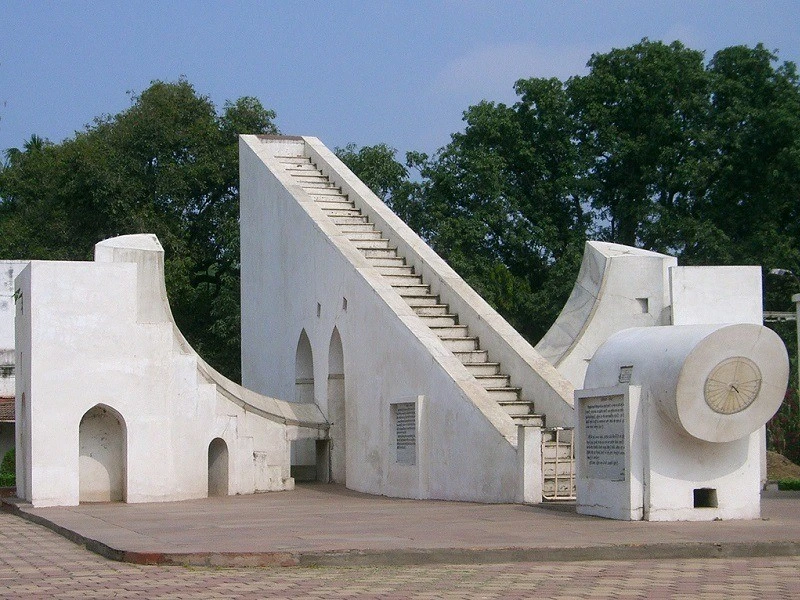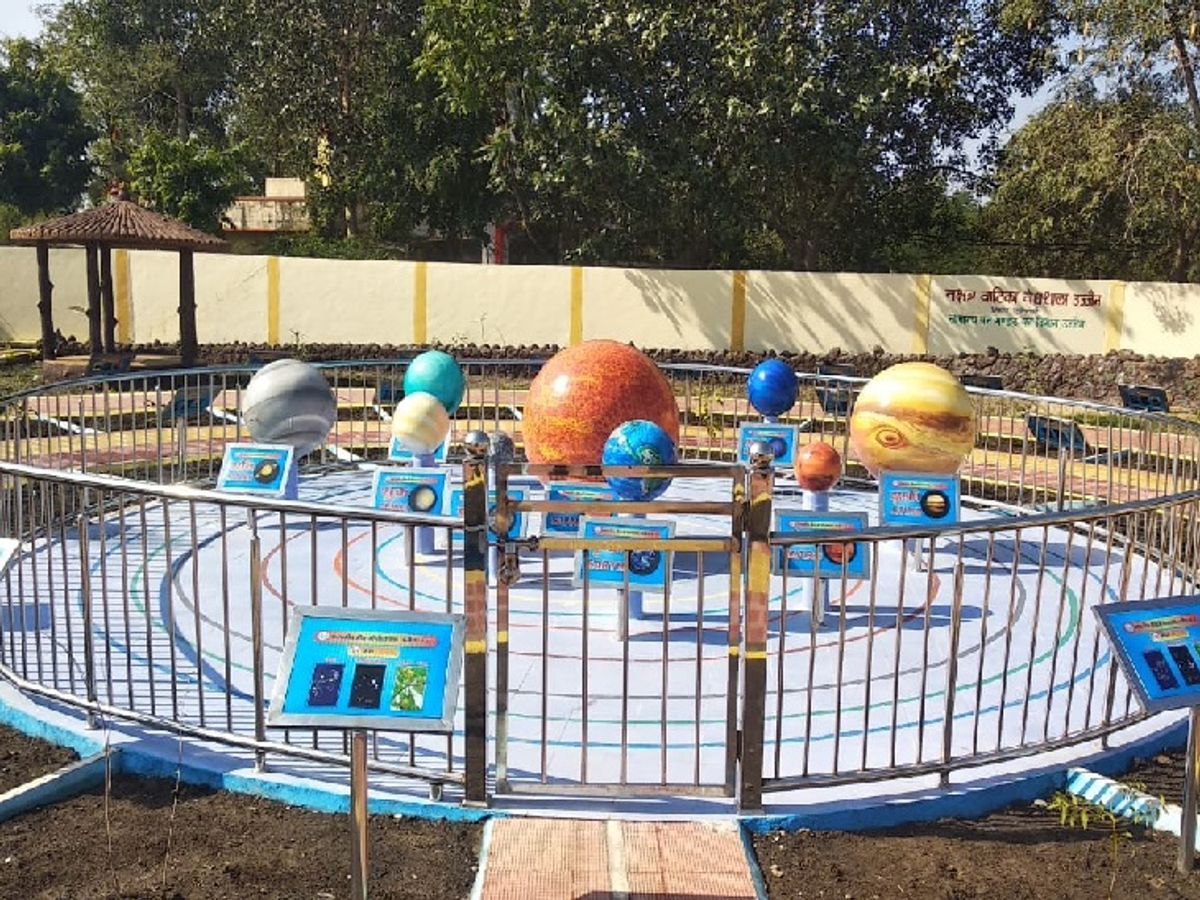
History and Significance
Maharaja Jai Singh II, a passionate astronomer and mathematician, was deeply interested in studying celestial movements and improving astronomical instruments. He commissioned the construction of Jantar Mantar in Ujjain in 1725, recognizing the city's long-standing association with astronomy. Ujjain's position on the Tropic of Cancer, a key geographical marker, further solidified its importance as a location for astronomical observation.
Jantar Mantar is not just a single structure; it's a captivating ensemble of eleven astronomical instruments, each designed for a specific purpose. These instruments, crafted from red sandstone and marble, are marvels of engineering and scientific ingenuity. Some of the most noteworthy instruments include:
- Samrat Yantra: This colossal sundial, towering over 70 feet, is the largest sundial in India. It casts a precise shadow throughout the day, allowing for accurate measurement of time and declination of the sun.
- Mishra Yantra: This versatile instrument combines sundial, quadrant, and azimuth dial functions. It allows for observations of the sun's altitude, azimuth, and time throughout the day.
- Jaipur Yantra: This cylindrical sundial, resembling a cylindrical sundial, is designed to track the sun's movement throughout the year and determine equinoxes and solstices.
- Narivalaya Yantra: This hemispherical sundial, shaped like a giant bowl, measures the time of day and the altitude of celestial bodies.

Importance:
Jantar Mantar holds immense significance for understanding the history of astronomy in India. These instruments showcase the advanced scientific knowledge and innovative spirit of the Mughal era. They served as vital tools for astronomers to:
- Predict astronomical events with greater accuracy, including eclipses and solstices.
- MTrack the movement of celestial bodies like the sun, moon, and planets
- Develop accurate calendars based on astronomical observations.
Jantar Mantar's importance extends beyond its historical value. In the present day, the observatory serves as an educational resource, offering a glimpse into the ingenious methods used by ancient astronomers. Students and astronomy enthusiasts can gain valuable insights into:
- The principles of celestial mechanics and timekeeping.
- The evolution of astronomical instruments throughout history.
- The application of mathematics and geometry in astronomical calculations.
Planning Your Visit :
Jantar Mantar is located in the heart of Ujjain, near the Central Bus Stand. It is easily accessible by rickshaw or taxi from any part of the city. The observatory is open to the public from sunrise (around 6:00 AM) to sunset (around 9:00 PM) .
What to Expect and Enjoy :
A visit to Jantar Mantar is both educational and visually captivating. Walking amongst these colossal instruments, each with its unique design and purpose, offers a unique experience. Engaging a knowledgeable guide can significantly enhance your understanding of the instruments and their functions. Observing the shadows cast by the sundials and imagining the calculations performed by ancient astronomers adds another dimension to the visit.
The observatory also offers information panels and brochures explaining the scientific principles behind each instrument. Plan your visit during the afternoon hours for optimal sunlight, allowing you to witness the instruments in action.
Jantar Mantar is a captivating destination for anyone interested in astronomy, history, or simply appreciating human ingenuity. This architectural masterpiece stands as a testament to India's rich scientific heritage and continues to inspire awe and wonder.
Explore Other Attractions in Ujjain
Ujjain is a city full of history, culture, and spirituality. After exploring this site, make sure to visit these other remarkable attractions:
- Sandipani Ashram: A sacred site where Lord Krishna, Balram, and Sudama are believed to have received their education. The ashram's peaceful surroundings make it a spiritual haven.
- Kaliadeh Palace: An architectural marvel on the banks of the Shipra River, showcasing Persian-style design and offering a glimpse into Ujjain's royal history.
- Vikram University: Named after the legendary King Vikramaditya, this renowned institution is a landmark of education and culture in Ujjain.
- Triveni Museum: Home to exquisite artifacts, sculptures, and exhibits that narrate the rich history and art of Ujjain.
- Bhartrihari Caves: Explore the legendary caves associated with Bhartrihari, known for their historical significance and tranquil environment.
- Main Ghats: Visit the sacred ghats along the Shipra River, where rituals, prayers, and a serene atmosphere create a divine experience.
